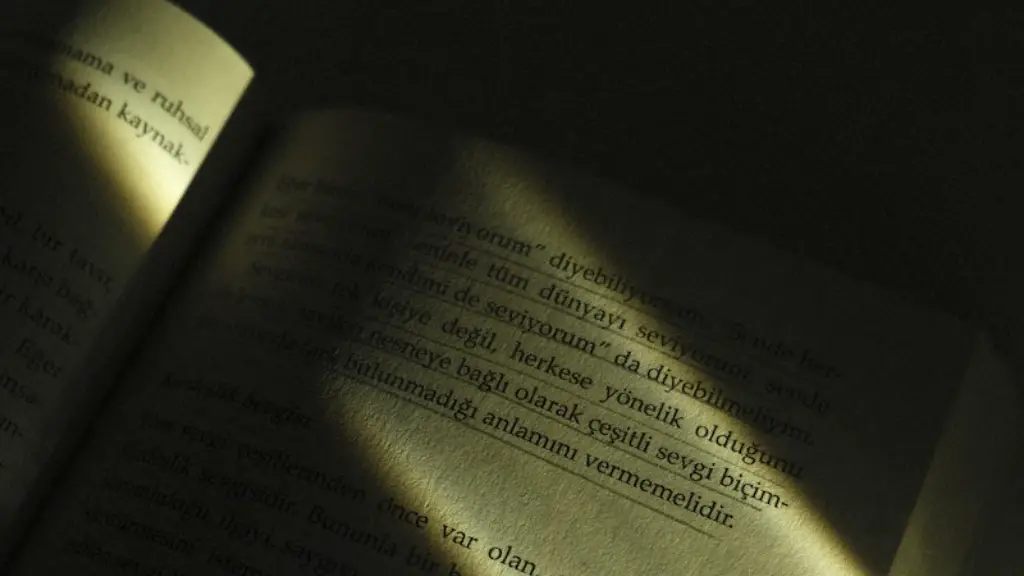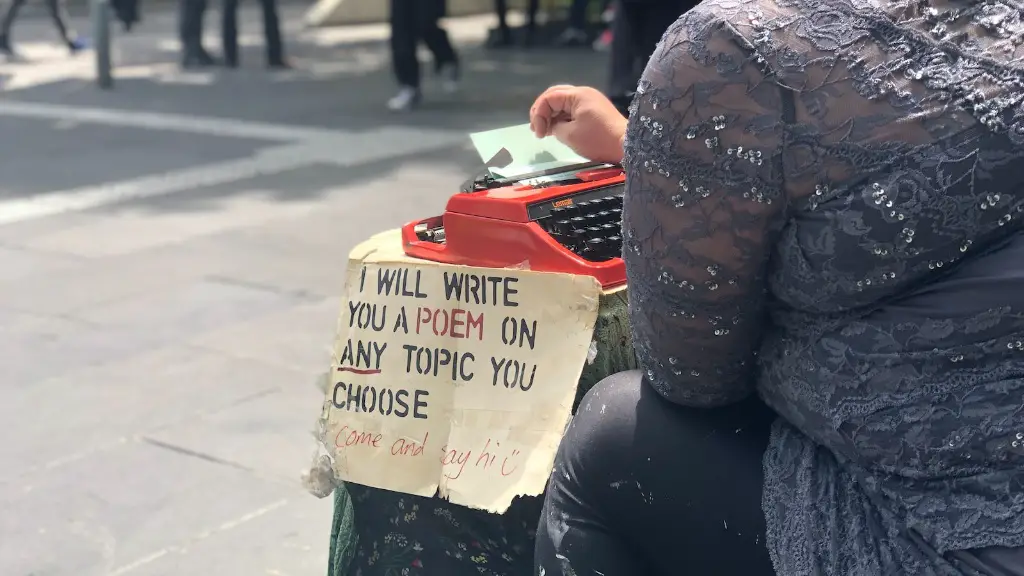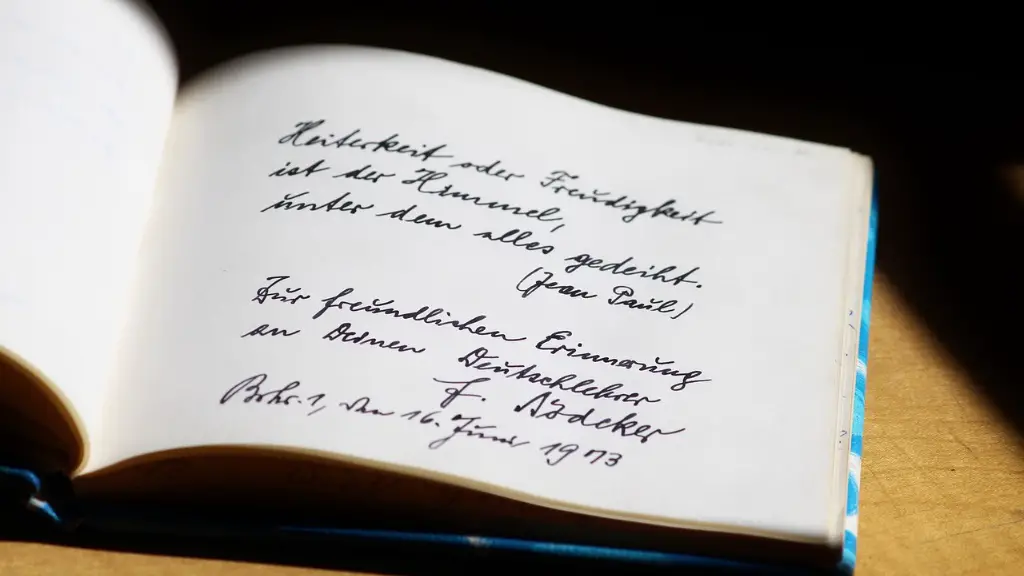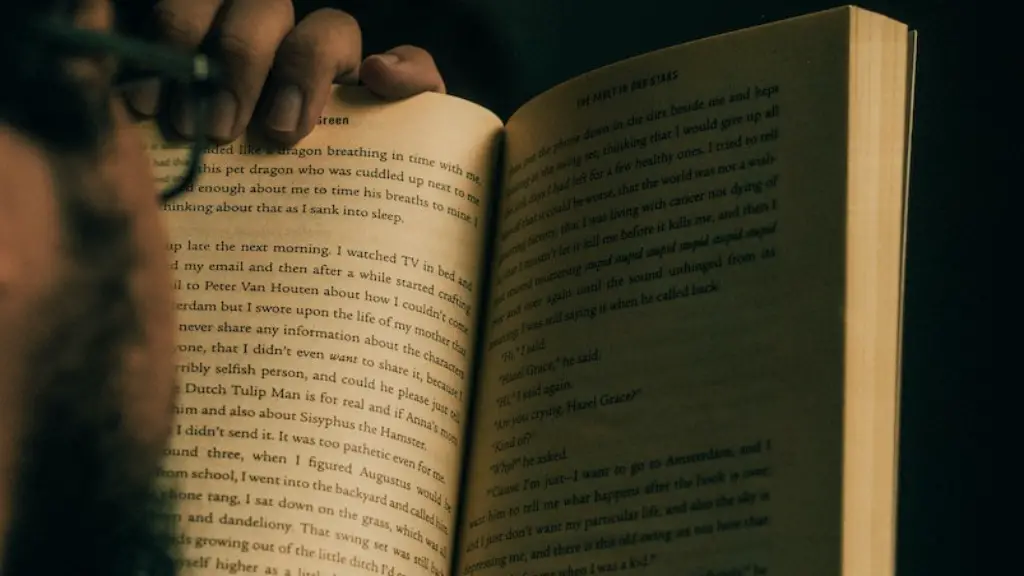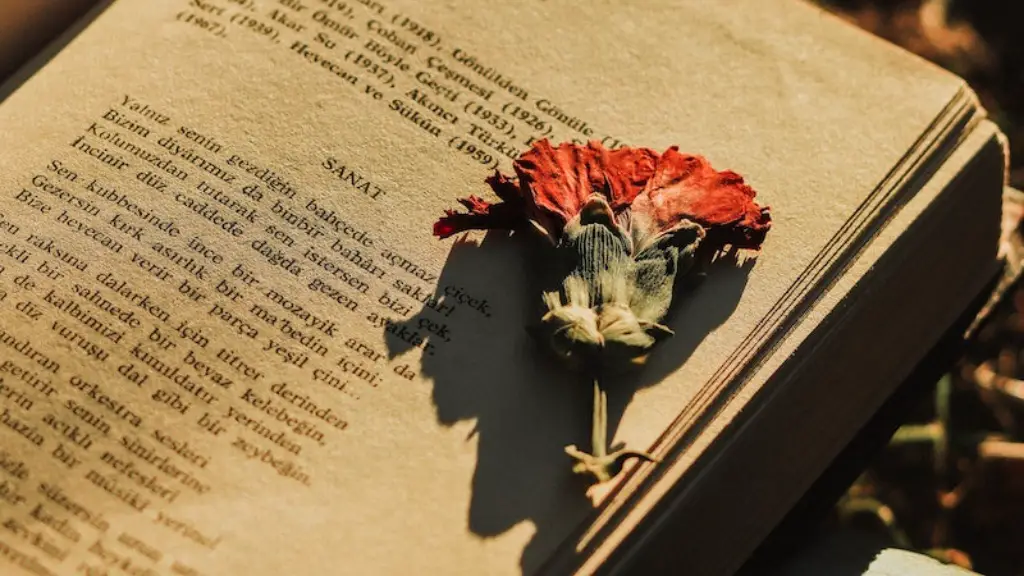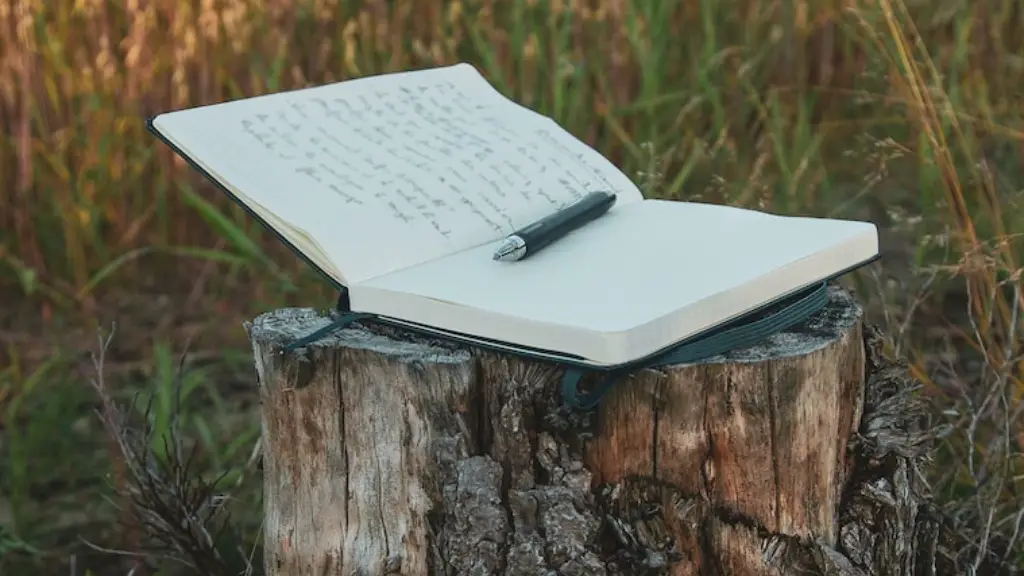Literary Devices in Poetry
Poetry is a form of literature that stirs up emotion and conveys the beauty of language. It uses powerful metaphors, symbols, and literary devices to explore and explain the human experience. Literary devices are words or phrases used to convey an idea, make a comparison, or add colour to writing. They can be used to craft a stunning image, to enhance a piece of text, and to convey emotion. A few examples of literary devices used in poetry are simile, metaphor, personification, and alliteration.
Similes are used to draw comparisons between two objects or ideas. They usually incorporate the words ‘like’ or ‘as’ to help illustrate the comparison. For example, a poet could write “The night sky is like a velvet blanket”. This comparison helps to create a vivid image in the reader’s mind and evoke emotion.
Metaphors also help to create an image, but they do so by directly stating that one object is another. For example, “life is a journey”. This metaphor helps the reader to think of life in terms of a traveler’s path, with new experiences and challenges to overcome along the way.
Personification is a literary device in which a writer gives human qualities to something that is not human. For example, a poet might write, “The stars danced across the night sky”. By giving the stars human qualities, such as the ability to dance, the poet is making the image more vivid and engaging.
Alliteration is a literary device in which a writer uses words that begin with the same sound. For example, a poet might write, “Breaking through these brittle branches”. By repeating the letter “b”, the poet is creating a rhythm and bringing out the sound of breaking branches.
Imagery
Imagery is a type of literary device that produces a vivid image in the reader’s mind and evokes emotions. Poets often use sensory details, such as sight, sound, smell, taste, and touch, to create powerful images in the reader’s mind. For example, a poet might write, “The salty sea air fills my lungs”. By using sensory language, the poet is able to create a vivid and sensory image in the reader’s mind.
Imagery can also be used to create metaphors. For example, a poet might write, “My heart is an open field, ready for the sun’s rays to break through”. By using imagery to create a metaphor, the poet is able to evoke emotion and describe a feeling of openness and hope.
Figurative Language
Figurative language is a type of literary device that is used to convey a meaning that is different from the literal meaning. It is often used to create vivid images in the reader’s mind. For example, a poet might write, “My heart is a flame melting the ice around it”. In this example, the poet is using figurative language to describe a feeling of heat and cold. This figurative language helps to create a vivid image in the reader’s mind.
Figurative language can also be used to convey a powerful meaning or feeling. For example, a poet might write, “My love is a raging fire, burning with passion”. By using figurative language, the poet is able to convey a powerful feeling of love and passion.
Figurative language can also be used to convey complex emotions and ideas in a simple way. For example, a poet might write, “The sky is a canvas painted with stars”. By using figurative language, the poet is able to convey a beautiful image while also conveying the idea that the night sky is a vast, mysterious place.
Rhythm and Repetition
Rhythm and repetition are literary devices that are used to create a musical quality in a poem. A poet might use rhyme, meter, or alliteration to create a rhythmic pattern. The repetition of certain sounds or words can help to create a rhythm or mood in a poem. For example, a poet might write, “White, white, winter snow, falling, falling to the ground below”. The repetition of the words “white” and “falling” help to create a rhythm and evoke a feeling of peacefulness.
Rhythm and repetition can also be used to add emphasis and draw attention to a certain idea or emotion. For example, a poet might write, “The broken glass of shattered dreams, scattered and cast aside”. The repetition of the word “broken” helps to emphasize the idea that the dreams have been shattered and also helps to draw the reader’s attention to the emotion of sadness.
Symbolism
Symbolism is a type of literary device in which a poet uses objects, names, characters, or colors to represent abstract ideas. The poet uses these symbols to convey a certain meaning or emotion. For example, a poet might write, “The grey sky is a symbol of loneliness”. By using a symbol, the poet is able to evoke emotion and convey a certain meaning to the reader.
Symbolism can also be used to represent complex ideas or emotions. For example, a poet might write, “The full moon is an indicator of change”. By using a symbol, the poet is able to represent the idea of change without directly talking about it. This allows the reader to interpret the symbol in their own way.
Symbolism can also be used to create a powerful image in the reader’s mind. For example, a poet might write, “The red sunset is a sign of hope”. By using a symbol, the poet is able to create a vivid image in the reader’s mind and evoke emotion.
Personification
Personification is a type of literary device in which a writer gives human qualities to something that is not human. For example, a poet might write, “The wind whistles its secrets through the trees”. By using personification to give the wind a voice and the ability to speak, the poet is able to create a vivid image and evoke emotion.
Personification can also be used to create metaphors. For example, a poet might write, “Sorrow crept into my heart like a thief in the night”. By using personification, the poet is able to create a metaphor that conveys the idea that sorrow is an unwelcome intruder.
Personification can also be used to create vivid descriptions. For example, a poet might write, “The moonlight bathed the meadow in silver light”. By using personification, the poet is able to create an image that is vivid and evocative.
Hyperbole
Hyperbole is a type of literary device in which a writer uses exaggeration to create a powerful image or evoke an emotion. For example, a poet might write, “My love for you is greater than the stars in the sky”. By using hyperbole, the poet is able to create a powerful image and evoke a feeling of love and admiration.
Hyperbole can also be used to create humor or to emphasize a point. For example, a poet might write, “My eyes are as heavy as a ton of bricks”. By using hyperbole, the poet is able to emphasize the feeling of exhaustion and also create a humorous image.
Hyperbole can also be used to evoke strong emotions such as sadness or anger. For example, a poet might write, “My grief is so deep, I can feel it in my bones”. By using hyperbole, the poet is able to emphasize the feeling of grief and convey its power.
